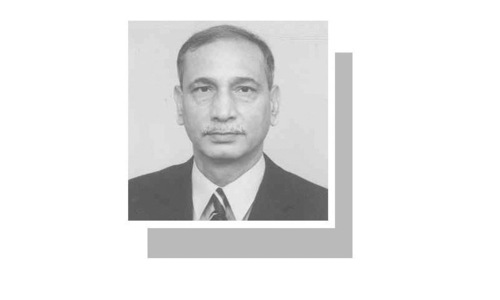MANILA: One of the most intense typhoons ever recorded tore into the Philippines on Friday, triggering flash floods and ripping down buildings as millions of people huddled indoors.
Super Typhoon Haiyan smashed into fishing communities on the central island of Samar, about 600 kilometres southeast of Manila, before dawn on Friday with maximum sustained winds of 315 kilometres an hour.
The strength of the wind made it one of the four most powerful typhoons ever recorded in the world, and the most powerful to have made landfall, according to Jeff Masters, the director of meteorology at US-based Weather Underground.
Masters said he expected the damage in Guiuan, the fishing town of about 40,000 people that was the first to be hit after Haiyan swept in from the Pacific Ocean, to be “catastrophic”.
“Perhaps the greatest wind damage any city on Earth has endured from a tropical cyclone in the past century,” Masters wrote on his blog for the weather monitoring website at www.wunderground.com.
Communication with Guiuan was cut off immediately after Haiyan hit, and the civil defence office said it was too early to give an assessment of the damage there.
But in Tacloban, a nearby city of more than 200,000 people, streets were flooded and some buildings were torn down, according to footage broadcast on ABS CBN television.
Haiyan had maximum sustained winds on Friday morning of 315 kilometres an hour, and gusts of 379 kilometres an hour, according to the US Navy's Joint Typhoon Warning Centre.
Masters said the previous record for the strongest typhoon to make landfall was Hurricane Camille, which hit Mississippi in the United States with winds of 305 kilometres an hour in 1969.
Preparing for disaster
Philippine President Benigno Aquino on Thursday warned his countrymen to make all possible preparations for Haiyan.
“To our local officials, your constituents are facing a serious peril. Let us do all we can while (Haiyan) has not yet hit land,” Aquino said in a nationally televised address.
Aquino warned areas within the 600-kilometre typhoon front would be exposed to severe flooding as well as devastating winds, while coastal areas may see waves six metres high.
More than 125,000 people in the most vulnerable areas had been moved to evacuation centres before Haiyan hit, according to the civil defence office, and millions of others braced for the typhoon in their homes.
Authorities said schools in the storm's path were closed, ferry services suspended and fishermen ordered to secure their vessels.
In the capital of Manila, which was on the northern edge of the typhoon's path, many schools were closed amid forecasts of heavy rain.
Philippine Airlines, Cebu Pacific and other carriers announced the suspension of hundreds of flights, mostly domestic but also some international.
State meteorologist Romeo Cajulis said on Friday that Haiyan was travelling quickly, at 39 kilometres an hour, and would travel across the country towards the South China Sea throughout Friday.
One particularly vulnerable area in Haiyan's path was the central island of Bohol, the epicentre of a 7.1-magnitude earthquake last month that killed 222 people.
At least 5,000 survivors were still living in tents on Bohol, and they were moved to schools that had been turned into evacuation centres.
Other danger zones were the port cities of Cagayan de Oro and Iligan on the southern island of Mindanao, where flash floods induced by Tropical Storm Washi killed more than 1,000 people in December 2011.
The Philippines is battered by an average of 20 major storms or typhoons each year, many of them deadly. The country also suffered the world's strongest storm of 2012, when Typhoon Bopha left about 2,000 people dead or missing on Mindanao island in December.
The government and some scientists have said climate change may be increasing the ferocity and frequency of the storms.
Masters said warm waters of the Pacific Ocean were an important reason for the strength of Haiyan.
“It had very warm waters that extended to great depth, and favourable upper level winds that... acted to ventilate the storm, allowing large amounts of air to get sucked in near the surface and get carried away,” he wrote in an e-mail to AFP.
But Masters said it was premature to blame climate change for Haiyan.
“The historical record of typhoons and hurricanes is too short and of too low quality to say if climate change may have played a role,” he said.


















































Dear visitor, the comments section is undergoing an overhaul and will return soon.